| Umělec magazine 2001/4 >> Hungary for more | List of all editions. | ||||||||||||
|
|||||||||||||
Hungary for moreUmělec magazine 2001/401.04.2001 Emese Süvecz | q&a | en cs |
|||||||||||||
|
"Budapest saw the opening of a new museum on September 22 that effectively broke the mold of the local status quo. The Hungarian art scene had been anxiously anticipating MEO for some time, as this project represents the first initiative of its kind to emerge from the private sector. MEO—Contemporary Art Collection belongs to businessman Lajos Kováts who has been gathering experience in the auction business as well as running Blitz Gallery for the past ten years. The collection is located in a large building of a former leather factory, and consists of ca. 3000 m2 of exhibition space, a coffee bar and a bookshop.
When did you start collecting art? I’m not really a collector; I have never really been one. I would occasionally build up collections for one reason or another. Once because I thought that my gallery could only work if I kept certain things and collected them. For example I once collected Frank Figyes [Hungarian painter 1890–1976] just because I wanted to put on an exhibition for him, by which I hoped to place him both in the auction business and in the history of art. I put on an exhibition, made the catalogue, and then I sold the works. So why then did you start collecting contemporary art? There are many reasons. One of them concerns the exhaustion of the auction business in Hungary. Its quality has deteriorated compared to what it was like ten years ago. This can be explained by the acquisition of all the first-rate paintings by the Hungarian plutocracy, and it is unlikely that they will ever appear in trade again, or if they do, only very rarely and priced way above market value. The other reason is that I have always been interested in contemporary art, ever since my childhood, and not only that — I used to take painting lessons, which was more interesting to me than classical art. Eight years ago I invited tenders at the Academy of Fine Arts in Budapest, but it was not successful. I tried to introduce contemporary works into the auctions four years ago, but no interest was shown. Why is now a favorable time to introduce contemporary art, and what kind of art do you support? Hungarian art, from the point of view of art history and the public auction markets, came to an end after World War II. Three or four years ago I started dealing with the 1960s, then I focused exclusively on the artists from the Iparterv exhibition. I put together a serious collection, but it was not one I ever intended to hold onto until my dying day. I tried to draw attention to neglected works, basically those that were in the artists’ possession because nobody else was interested in them. Or those works that had been neglected because, by the time some artists had become established, only their most recent works were in demand, but not their older works, except for a few pieces which were given to museums or to friends. Does that mean that you consider collecting to be nothing more than an investment? I don’t really see it as an investment; I see it as a duty. Then what kind of duty is it? Why is it so important to collect contemporary art? I don’t think of this activity in the same manner as a collector might, someone who has been collecting all his life; I’m not interested in that so much. What interests me is the assembly of works, their subsequent exhibition and the publication of catalogues. The fact that this activity brings in an income is just an added bonus. Actually while I was collecting work from the 1960s I became acquainted with many contemporary artists, and I started buying their current works. And with this old factory, an opportunity to found an institute presented itself, and I started to buy contemporary works once again. This is a very difficult thing and it will give rise to criticism. Within such a limited time it’s not possible to put together a collection that has distinguishing features and at the same time encompasses works of an exclusive standard. Time was short. In the beginning you are forced to buy many things. My primary motivation was to present a cross-section of the current situation. This means of collecting art is the strategy used by dealers. In MEO there will be several shows besides the permanent exhibition of the collection. What is your plan for the future of this institute? Yes, besides the collection, we will run a gallery as well, and without a doubt it will function as a reference for the collection. I own them both along with my partner. But they do not intertwine financially; only their location is the same. Whoever comes here with the intention of trading can visit the museum as well, and those who come to see the collection can maybe buy contemporary art. This is how it works in Paris, where the galleries are situated around a museum. It’s clear that you started collecting contemporary art because you saw new possibilities in it, but it doesn’t necessarily follow that the institution is being founded for this collection. I made this decision because there isn’t anything like it in Hungary. I think this is the right time to make it happen because we have the chance to do it. Furthermore more and more people are interested in contemporary art in Hungary. On the other hand, I like doing interesting things and this is a very exciting and difficult task, which I want to take to the highest level. In your collection there is only Hungarian art. Do you have other plans for the future? We would like to broaden the collection in different ways from what we’d started to do three years ago. We would like to collect international art as well. Collecting international art has not been effectively dealt with by the big Hungarian institutions — the Museum of Fine Art or the Museum of Contemporary Art, Ludwig Museum Budapest, to name a few — for financial and bureaucratic reasons. We are going to be more flexible. We plan on inviting big international shows and then we can decide to negotiate on keeping a piece for our collection. So in the long run it will be possible to establish a serious collection from which we are able to lend works to other museums for other shows. Beyond that, material is also going to be collected for curators to select works from, so that they can curate new shows based on different concepts. What kind of exhibitions do you intend to invite? We will strive not only to take in exhibitions that are travelling around the world representing national cultural values, those that are supported by the state or by foundations, but we would also like to select specific shows ourselves and invite them to come to Hungary. Our basic aim is to have exhibitions in about half a year that people will queue to get into. What exhibitions do you have in mind? First and foremost, contemporary art shows. Will people really queue for contemporary shows? This has never been achieved in Hungary. There are shows people will stand in line to visit if we bring them here. Which shows do you have in mind? The Herman Nitsch exhibition was crowded. The shows currently in MEO’s gallery are the Imre Bak solo exhibition and three video pieces by Chris Cunningham. Both were exhibited in the Arsenale at the Venice Biennale this year. Is there a kind of strategy here to arouse people’s interest? We would like to work out an exhibition policy that would give us the kind of attendance numbers we need. Based on our experience, MEO is already intriguing to a lot of people. Business people and companies want to cooperate with us to support our activity through bartering. We will therefore be able to finance big international shows. You want to establish a board of supporting members, which is unprecedented in the contemporary art scene in Hungary. What kinds of services do you offer and to whom? Even though this is a very new initiative, plenty of people have already surfaced. We expect this board to evolve into a community around the institute, whose private, disposable income will go towards the support of our activities. We can only offer reasonable services such as reductions in ticket prices, in the coffee bar or in the bookshop. Besides that we will organize exclusive events, fundraising parties where the community can make new contacts. What about your staff? Our staff only consists of a few people. Barnabás Bencsik is the artistic director; he has two assistants; I am the managing director and I am working with one assistant at the moment, but I get help from my other gallery, Blitz. We don’t want to work with more people; except in the case of a new project, and for that we will employ new people for a certain period of time. "
01.04.2001
Recommended articles
|
|||||||||||||
|
04.02.2020 10:17
Letošní 50. ročník Art Basel přilákal celkem 93 000 návštěvníků a sběratelů z 80 zemí světa. 290 prémiových galerií představilo umělecká díla od počátku 20. století až po současnost. Hlavní sektor přehlídky, tradičně v prvním patře výstavního prostoru, představil 232 předních galerií z celého světa nabízející umění nejvyšší kvality. Veletrh ukázal vzestupný trend prodeje prostřednictvím galerií jak soukromým sbírkám, tak i institucím. Kromě hlavního veletrhu stály za návštěvu i ty přidružené: Volta, Liste a Photo Basel, k tomu doprovodné programy a výstavy v místních institucích, které kvalitou daleko přesahují hranice města tj. Kunsthalle Basel, Kunstmuseum, Tinguely muzeum nebo Fondation Beyeler.
|







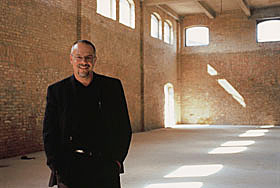
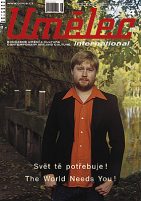


















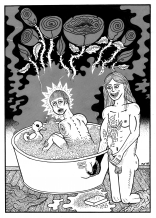
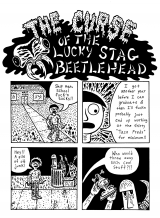

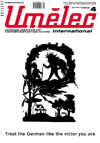


 New book by I.M.Jirous in English at our online bookshop.
New book by I.M.Jirous in English at our online bookshop.
Comments
There are currently no comments.Add new comment